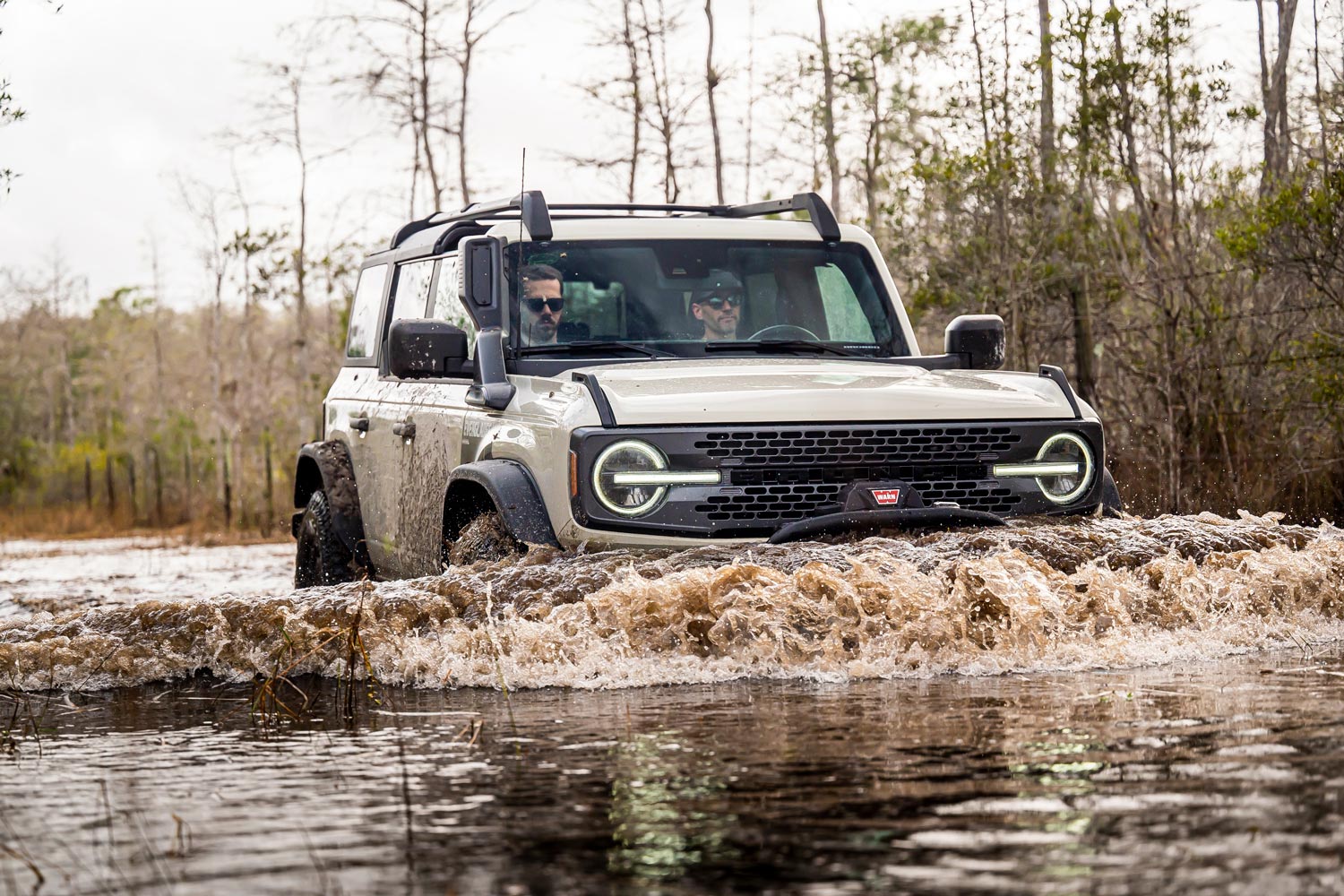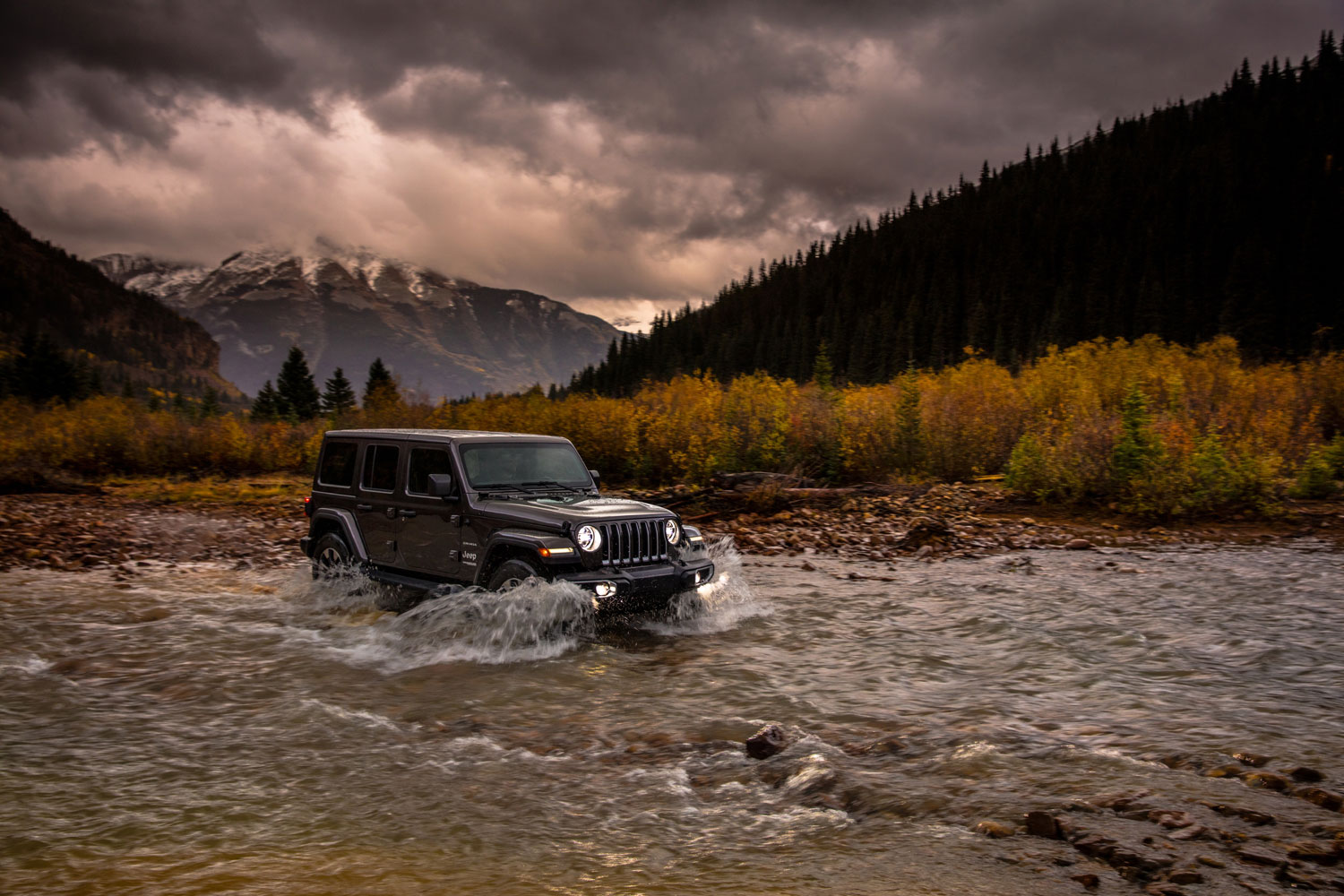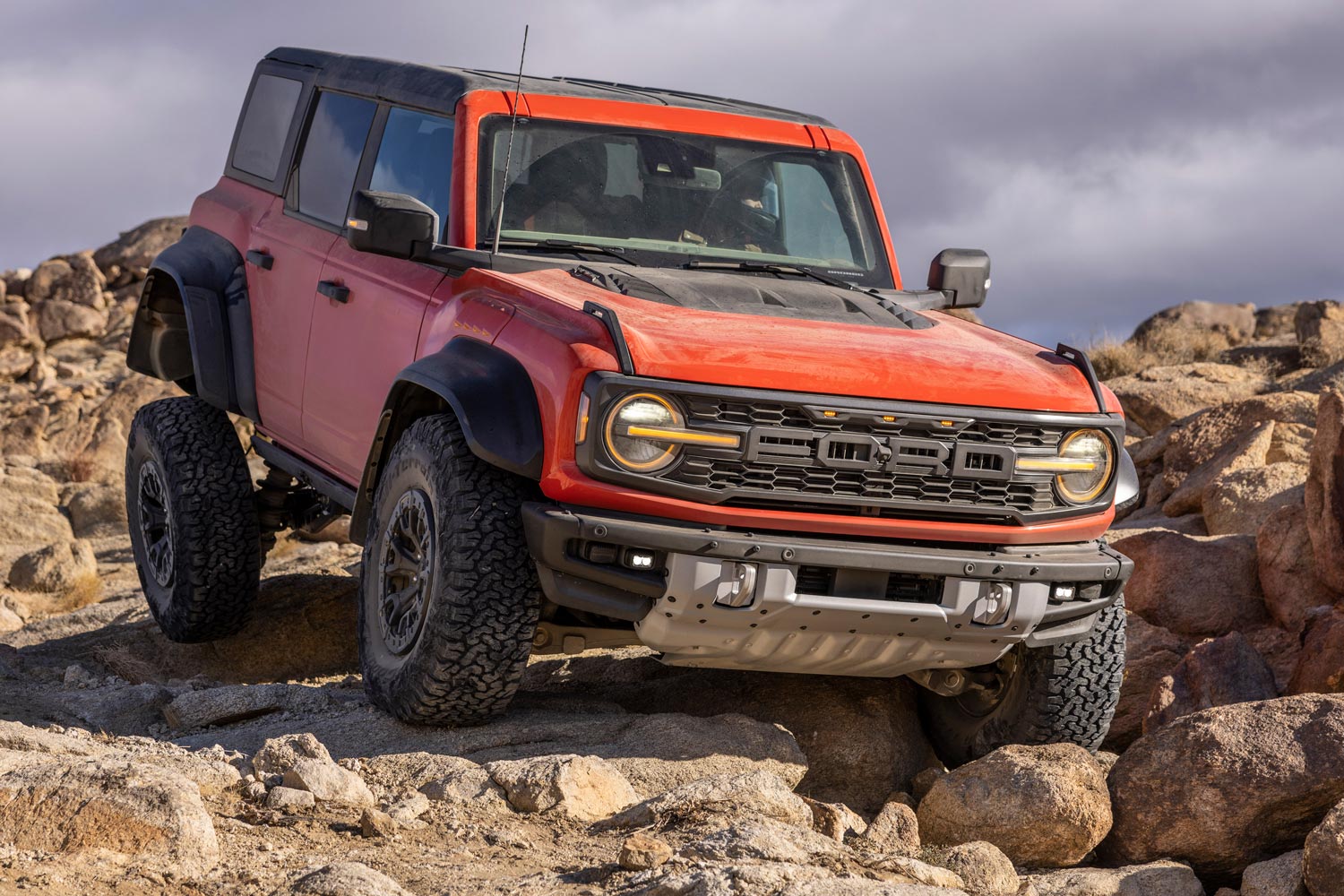The Beginner's Guide to Taking Your Ford Bronco or Jeep Wrangler Off-Road
Here are some things to consider before you stray off the beaten path for the first time.
 Ford/Jeep
Ford/Jeep
Article QuickTakes:
| | | | |
Going off-road can be a great adventure, or it can be a huge disaster. To ensure you have a good time, you need to prepare yourself and your vehicle for what lies ahead.
Know Where and Where Not to Go
Ford Broncos and Jeep Wranglers may boast a go-anywhere spirit, but that doesn’t actually mean they can go everywhere. You need to do your due diligence before you head off the highway.
Access to off-road vehicle trails differs by state, and trails may close for certain seasons or due to weather and other circumstances. Luckily, a number of government agencies such as the
Smartphone apps like
Wherever you go, make sure to carry the proper
 Ford
Ford
Know Your Vehicle
Understanding your off-roader’s limitations is key if you want a trouble-free experience. So get your owner’s manual and check the specifications.
- Can you lock the driveline into all-/four-wheel drive, ensuring both axles receive torque at all times?
- Is there a transfer case with low-range gearing that amplifies torque and provides additional low-speed control?
- Does the vehicle have a limited-slip or locking differential to assist with traction when a wheel slips or is raised into the air?
- Can you switch off traction control?
- Are there any off-road-specific modes that could help you on challenging terrain?
- Are the tires appropriate for your excursion (see
), and are they in good condition? - What’s the vehicle’s curb weight, and how much will it weigh when loaded with passengers and cargo?
- How much ground clearance does it have?
- Is the undercarriage well protected with skid plates?
- How much water can it safely wade through?
Knowing the answers to these questions will help you determine just how far to push your vehicle. If the specs fall short of your off-roading aspirations, you can of course modify your factory ride with aftermarket parts to enhance its terrain-tackling capability.
 Jeep
Jeep
Buddy Up
Hang out in off-road circles long enough and you’re bound to hear this adage: “Never wheel alone.” It’s a good idea to form at least a two-vehicle convoy, regardless of how simple a trail may seem. Not only can another person serve as a spotter, helping you navigate challenging or unfamiliar terrain, but they can get you out of the mountains, desert, or forest should your vehicle encounter an issue. Handheld,
Leverage Daylight
It’s easy for obstacles to hide under the cover of night. In fact, it’s one of the reasons
Tires Are Everything
Would you consider taking a hike through the mountains in penny loafers? Didn’t think so. Likewise, the highway-oriented all-seasons found on some Wranglers and Broncos aren’t great for off-roading. You really want a proper all-terrain or mud-terrain tire with knobby tread, side lugs, and strong construction.
You’ll also want to “air down” your tires before hitting the trails. That’s because releasing some air pressure flattens the tire a bit and increases its contact patch, which is helpful when you’re going over soft terrain. Although some suggest setting your tire pressures to 10 psi below the stock specification, there isn’t a set rule. It will vary depending on the vehicle, tire, and terrain at hand, plus some required trial and error.
Be careful, though. Release too much air and your tire may come off the wheel. And once you’re done off-roading, it is imperative that you inflate the tires to the recommended pressures before returning to the pavement. Make sure a 12-volt air compressor is on your packing list.
 Jeep
Jeep
Basic Vehicle Prep
In some ways, preparing your vehicle for off-roading isn’t that different from planning a road trip. You’ll want to make sure that (a) it’s up to date on its service and maintenance, (b) all major fluids such as oil, transmission fluid, and coolant are at their proper levels, (c) the battery is charged, and (d) you’ll have plenty of fuel by the time you reach the trailhead.
Preparing for the worst is also important. A first-aid kit is essential, along with a fire extinguisher, a flashlight, a blanket, and bottled water. In addition to your vehicle’s factory jack and toolkit, consider packing additional tools (e.g., socket or crescent wrenches, pliers, utility knife, etc.) for trailside repairs.
Bring a means to call for help. If you’re venturing beyond cellphone service, a satellite-based device like a
Look Twice, Drive Once
Professional racing drivers often walk the circuit before a race to inspect the surface and look for changes in the pavement that they can exploit (or avoid) to gain an edge. That’s a good thing to do when off-roading, too. Before going wheels-first down a path, take a moment to exit your vehicle and walk along the stretch of trail. Check to see how deep that puddle really is. Identify any obstacles that could be challenging (or damaging). This reconnaissance lets you plan your ideal line and prevent disaster.
 Ford
Ford
So, You’re Stuck
Sooner or later, everyone gets stuck. What now? Sometimes rocking a vehicle back and forth by alternating between reverse and drive can help free a stuck vehicle. You’ll want to shift into low range and a low gear in order to avoid spinning the wheels too much, as that could potentially cause your vehicle to sink farther into the ground.
If basic momentum isn’t enough to wiggle your vehicle free, it’s time to turn to recovery gear. Start with the inexpensive stuff, such as a compact shovel and a set of traction boards. Use the shovel to clear away some of the mire, and wedge a traction board under the misbehaving tire to provide a grippy surface for it to bite.
If you’re looking to climb rocks and tramp over any terrain, you’ll likely want a winch. Perhaps the ultimate off-road tool, a winch can get a vehicle out of many predicaments. But it may not be for everyone. Winches are heavy and expensive, and they can be dangerous if used improperly. If you do invest in one, be sure also to pick up a tree-saver strap, a winch damper, and a snatch block, and brush up on proper operating techniques.
Alternatively, if you’re in a convoy (as you should be), you can have a companion vehicle pull your off-roader out of the muck with a kinetic recovery rope. Unlike less-expensive tow straps, this rope is designed to safely stretch and contract, using its resulting kinetic energy to help yank the vehicle to safety. Rope sizing can be somewhat ambiguous, but there are
 Ford
Ford
Be Alert
Trail and weather conditions can change quickly—just ask the owner of the infamous
Read Up
Want to learn more?



